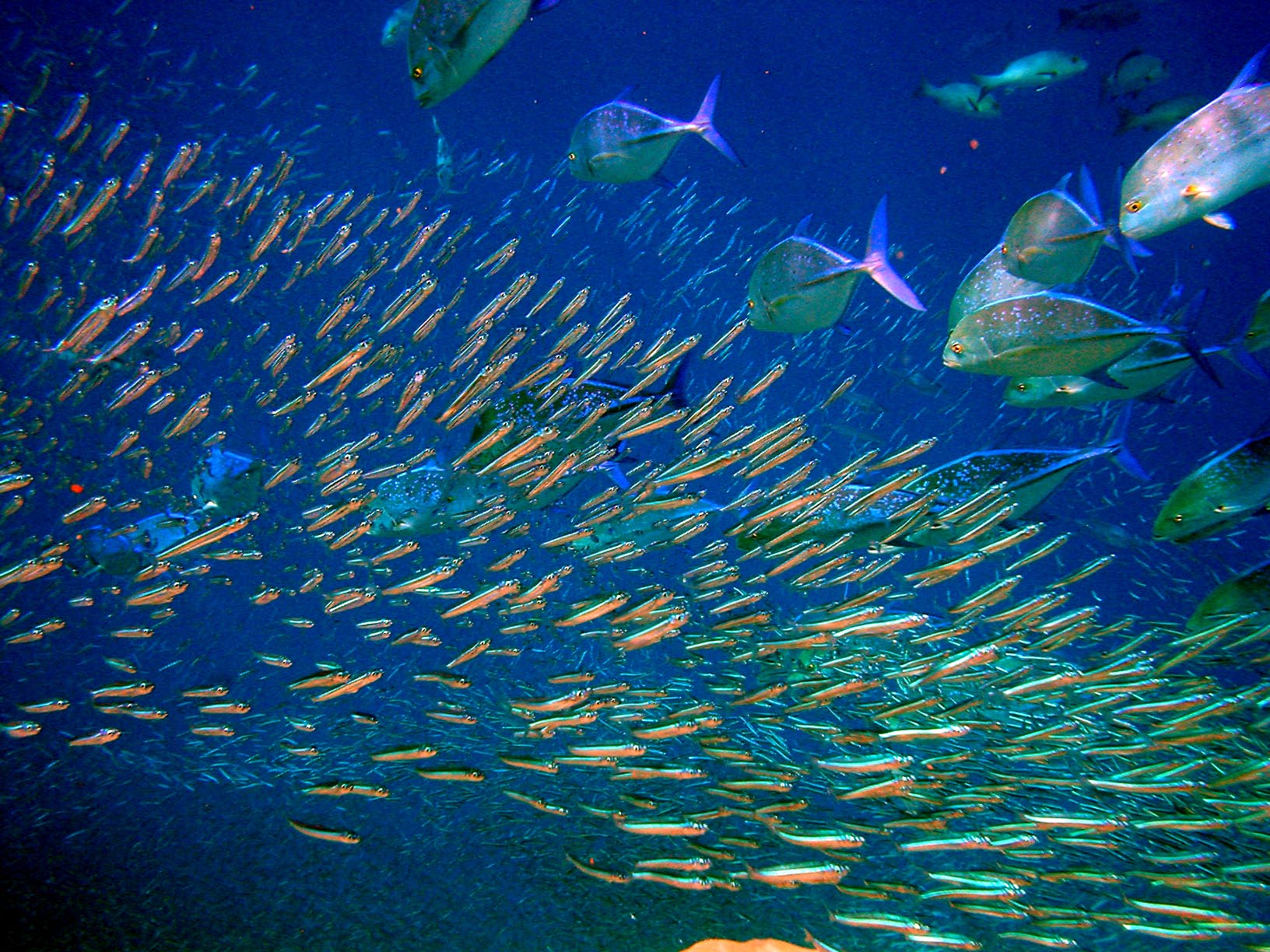| Pelagic Zone |
Any water in sea that is neither close to the bottom nor near the shore are called the Pelagic Zone.
Epipelagic (Sunlight) (660 ft)
The is the zone at the surface of the sea where enough light can penetrate the sea for photosynthesis. Nearly all primary production in the ocean occurs here. Consequently, plants and animals are largely concentrated in this zone. E.g plankton, floating seaweed, jellyfish, tuna, many sharks and dolphins.
Mesopelagic (Twilight)(3,300 ft)
Although some light penetrates this second layer it is impossible for photosynthesis to occur. At about 500 m the water also becomes depleted of oxygen. Organisms survive this environment by having more efficient gills or by minimizing movement.
e.g
e.g
swordfish, squid, wolfish
Bathypelagic (midnight)(13,000 ft)
At this depth, the ocean is made of near darkness apart from occasional bio luminescent organisms, such as lantern fish. No living plant life exists here. The only inhabitants are giant squid, smaller squids and the dumbo octopus.
Abyssopelagic (lower midnight) (13,000 ft) down to above the ocean floor
Very few creatures live in the freezing temperature, high pressures and complete darkness of this depth. Among the species found in this zone are several species of squid; echinoderms including the basket star, swimming cucumber, and the sea pig; and marine arthropods including the sea spider.
PS: Many of the species living at these depths are transparent and eyeless because of the total lack of light in this zone.
Pelagic ecosystem
The pelagic ecosystem is created by phytoplankton which occupy the beginning of the food chain. Phytoplankton made their own food using a process of photosynthesis. Because they need sunlight, they inhabit the upper, sunlit epipelagic zone.
 |
| Pelagic fish |


